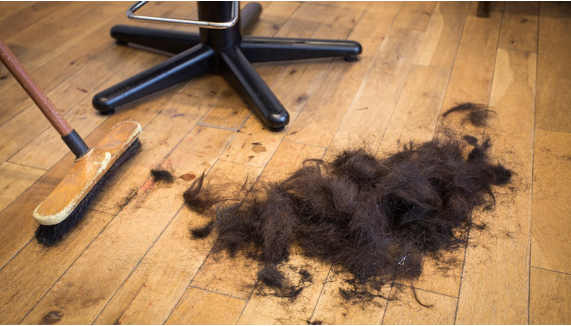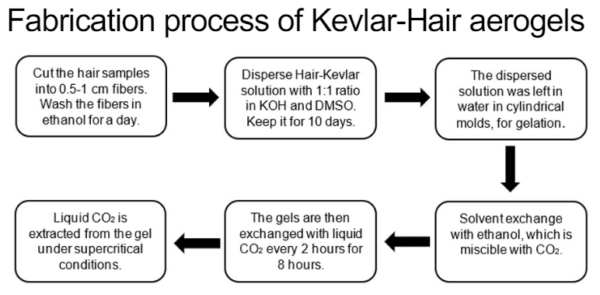Valorization of Human Hair Waste in the Synthesis of Kevlar-Based Aerogels

Abdul Baghirov pioneers a transformative method to integrate hair fibers into Kevlar aerogels. It offers enhanced filtration efficiency and sustainable solutions to combat environmental challenges due to human hair waste.
Human hair waste poses environmental challenges as it often ends up in landfills, sewage treatment plants, and natural water bodies. Despite its abundance, harnessing human hair waste for practical applications in polymer-based products is hindered by several factors. These include its relatively large fiber diameter, poorly understood surface chemistry, and the absence of established processes for efficient product fabrication.
You can also read: Boosting Exoskeleton Performance and Comfort
Abdul Baghirov, a PhD candidate from the University of Akron, successfully overcame obstacles related to hair waste utilization. His innovative approach resulted in a remarkable method for producing novel aerogel composites integrated with Kevlar nanofibers. This method caters for advanced filtration applications.
Integrating Hair Fibers
The novel approach to producing nanofiber reinforcement of Kevlar aerogels employs a crucial process of deprotonation. This method involves treating hair fibers with potassium hydroxide (KOH) in a dimethyl sulfoxide (DMSO) solution to create nanoporous structures within them. Simultaneously, a similar deprotonation process is applied to produce Kevlar aerogels. This simultaneous treatment ensures the integration of nanoporous structures into both the hair fibers and the Kevlar aerogels.
The fabrication begins with cutting air samples into 0.5-1 cm fibers. Then, they are washed in ethanol for a day. Subsequently, the Hair-Kevlar solution is dispersed in a 1:1 ratio in KOH and DMSO. It is then left to incubate for 10 days. The dispersed solution is then poured into cylindrical molds and left for gelation. Afterward, solvent exchange is conducted with ethanol, which is miscible with CO2. The gels undergo a series of exchanges with liquid CO2 every 2 hours, lasting for 8 hours in total. Finally, liquid CO2 is extracted from the gel under supercritical conditions, completing the process.

Fabrication process of Kevlar-Hair aerogels. Courtesy of Sustainable Valorization of Human Hair Waste: Novel Aerogel Composites with Kevlar Nanofibers for Advanced Filtration Applications. ANTEC 2024.
Advantages of Kevlar Composites
The Kevlar aerogel composites for filtration systems offer a multitude of benefits. Firstly, hair fibers significantly enhance the advanced fiber filtration capabilities by introducing distinctive nanoporous structures. These structures provide increased surface area for filtration, resulting in superior performance. Additionally, the presence of hair dispersions promotes heterogeneous nucleation, facilitating gelation and ensuring the formation of robust filters. Moreover, the strengthening effect of hair nanofiber dispersions extends the filter’s lifespan and improves its mechanical properties. This synergy between hair fibers and polymer gels offers a level of performance better than the polymer system alone.
The hair waste utilization in filtration systems reduces pressure drop, making the filtration process more energy-efficient. It also contributes to environmental sustainability by repurposing readily available waste material.

Sustainable filter media for air filtration. Courtesy of Sustainable Valorization of Human Hair Waste: Novel Aerogel Composites with Kevlar Nanofibers for Advanced Filtration Applications. ANTEC 2024.
Overall, hair fiber integration into Kevlar aerogel for filtration applications represents a promising avenue for achieving enhanced filtration performance, prolonged filter lifespan, and environmentally friendly solutions.
